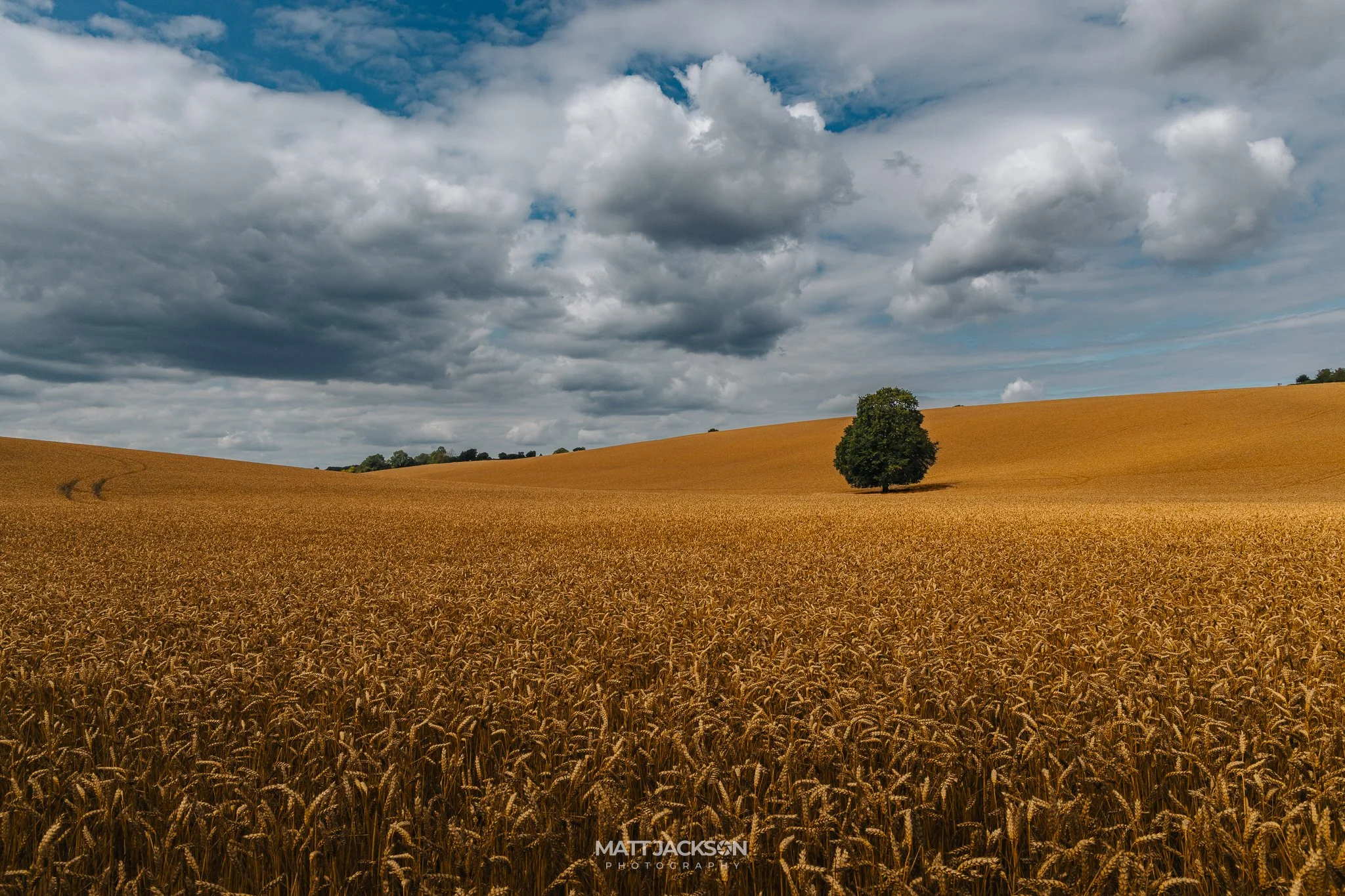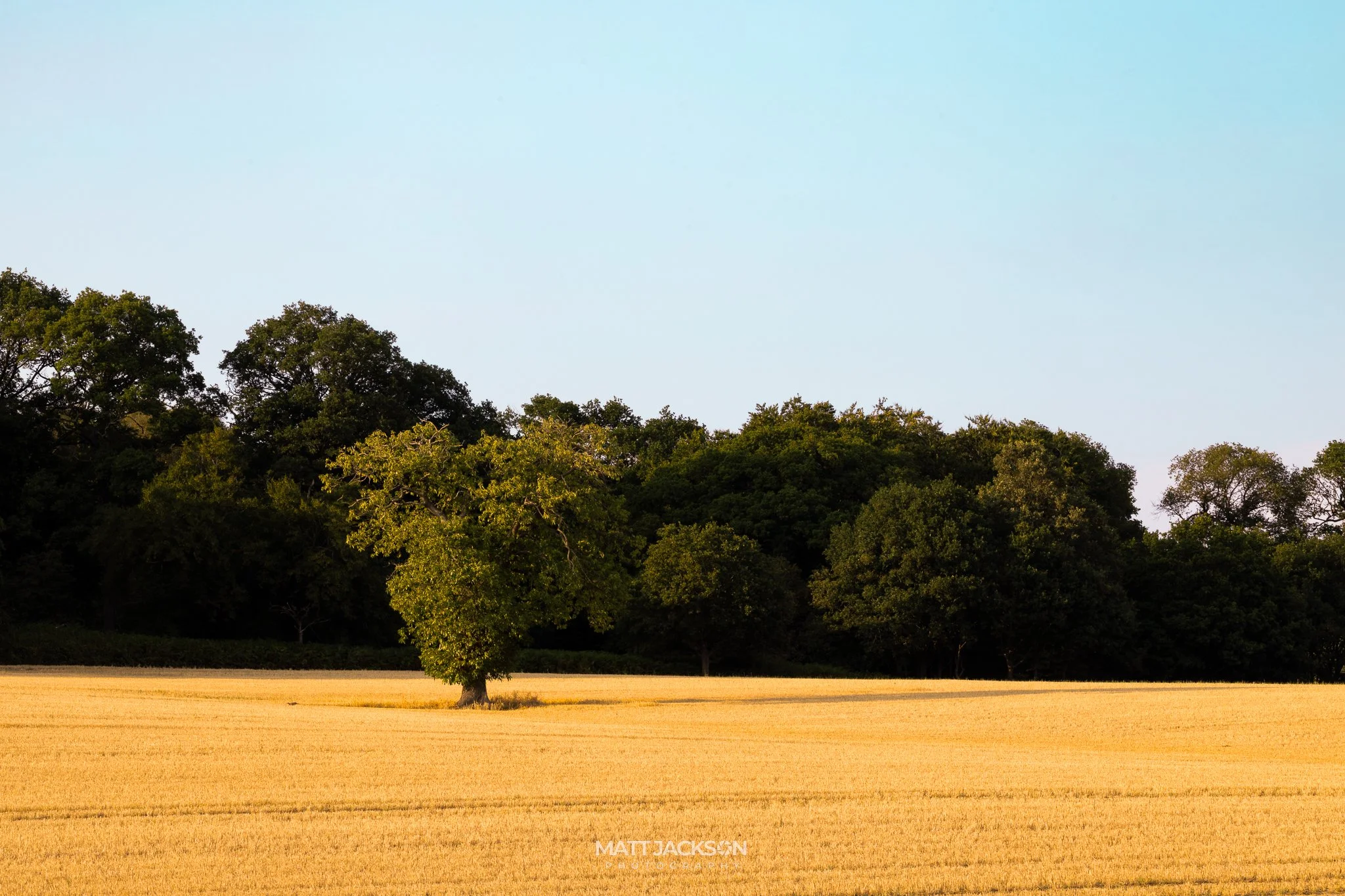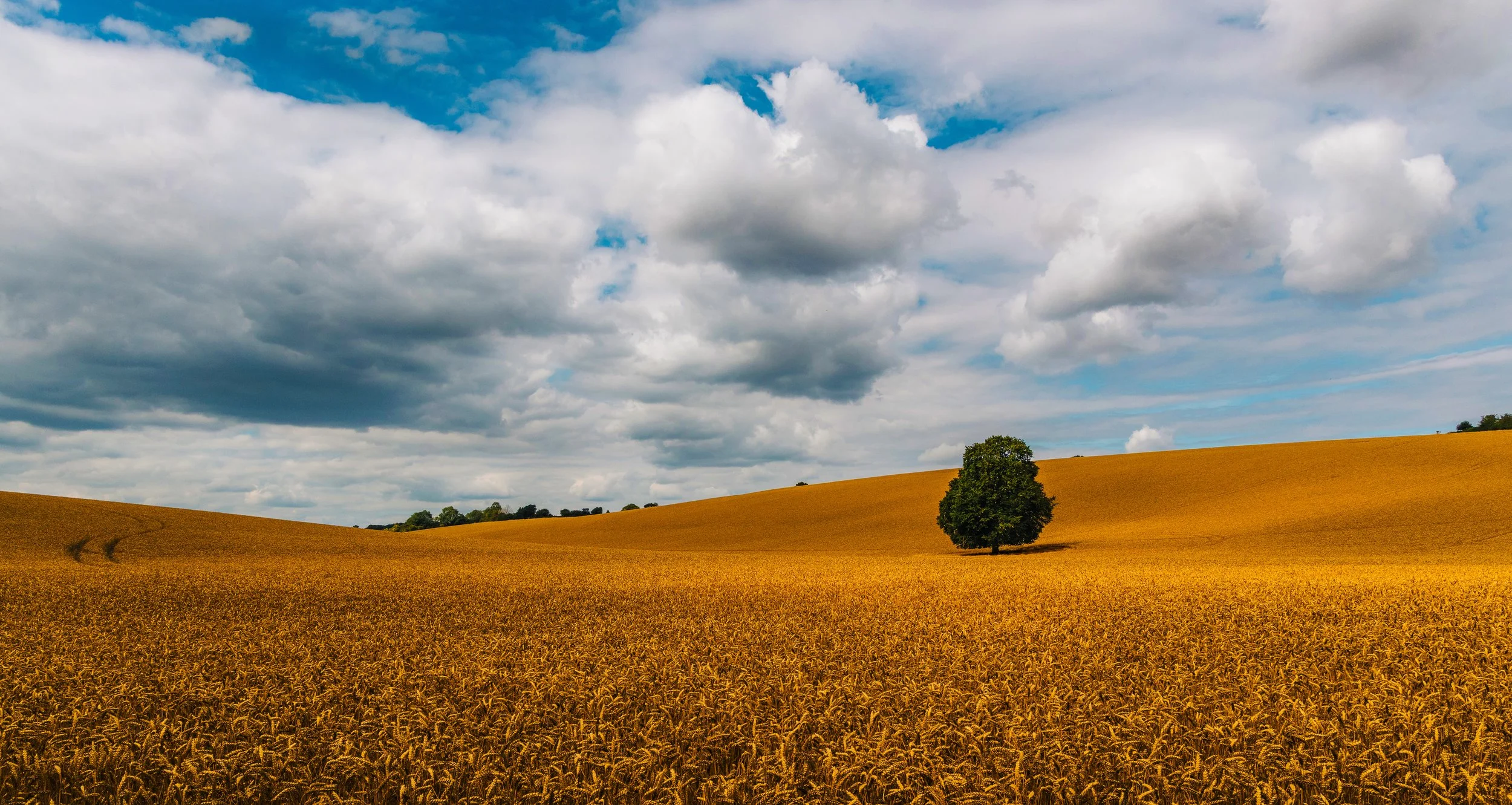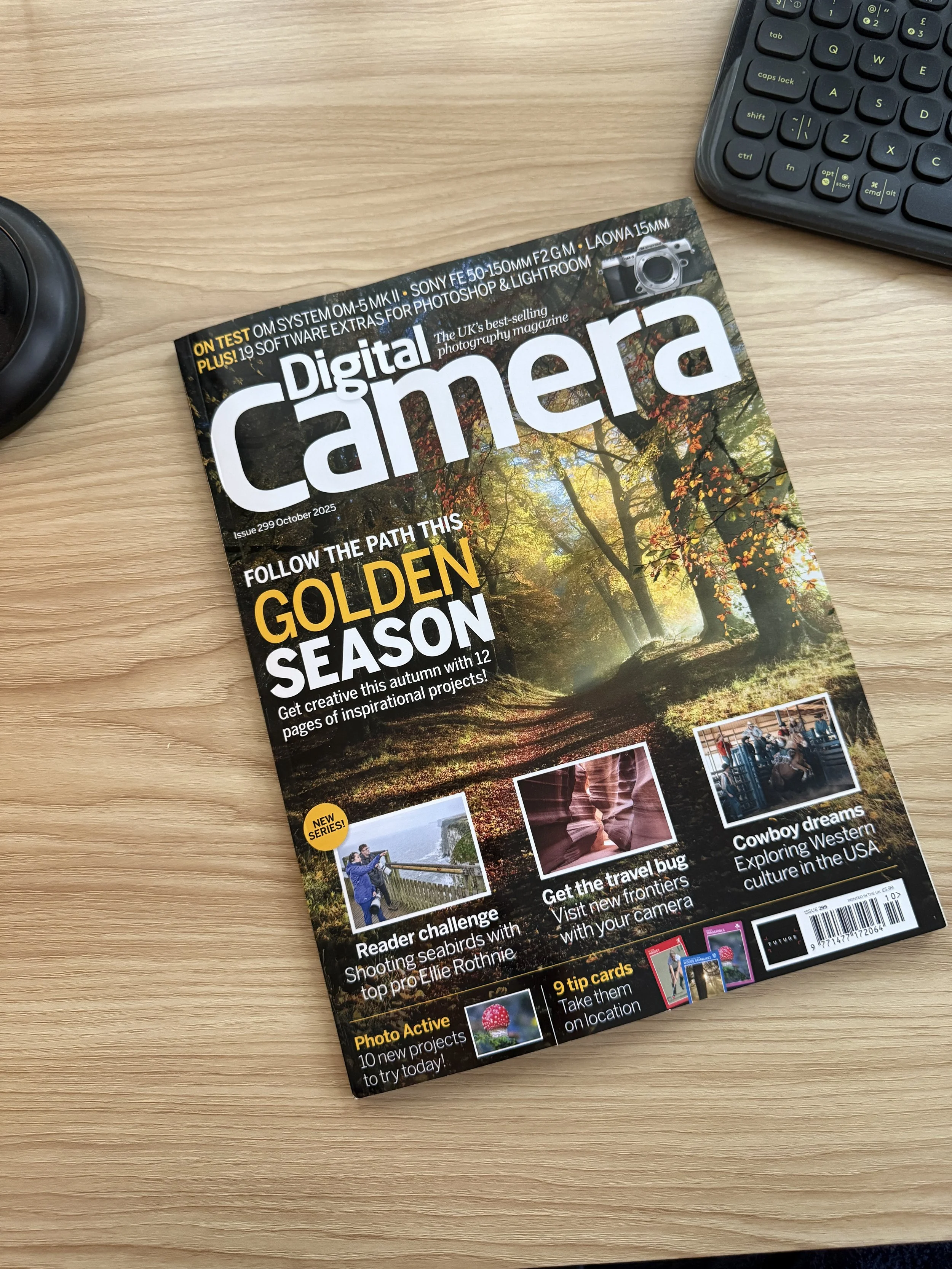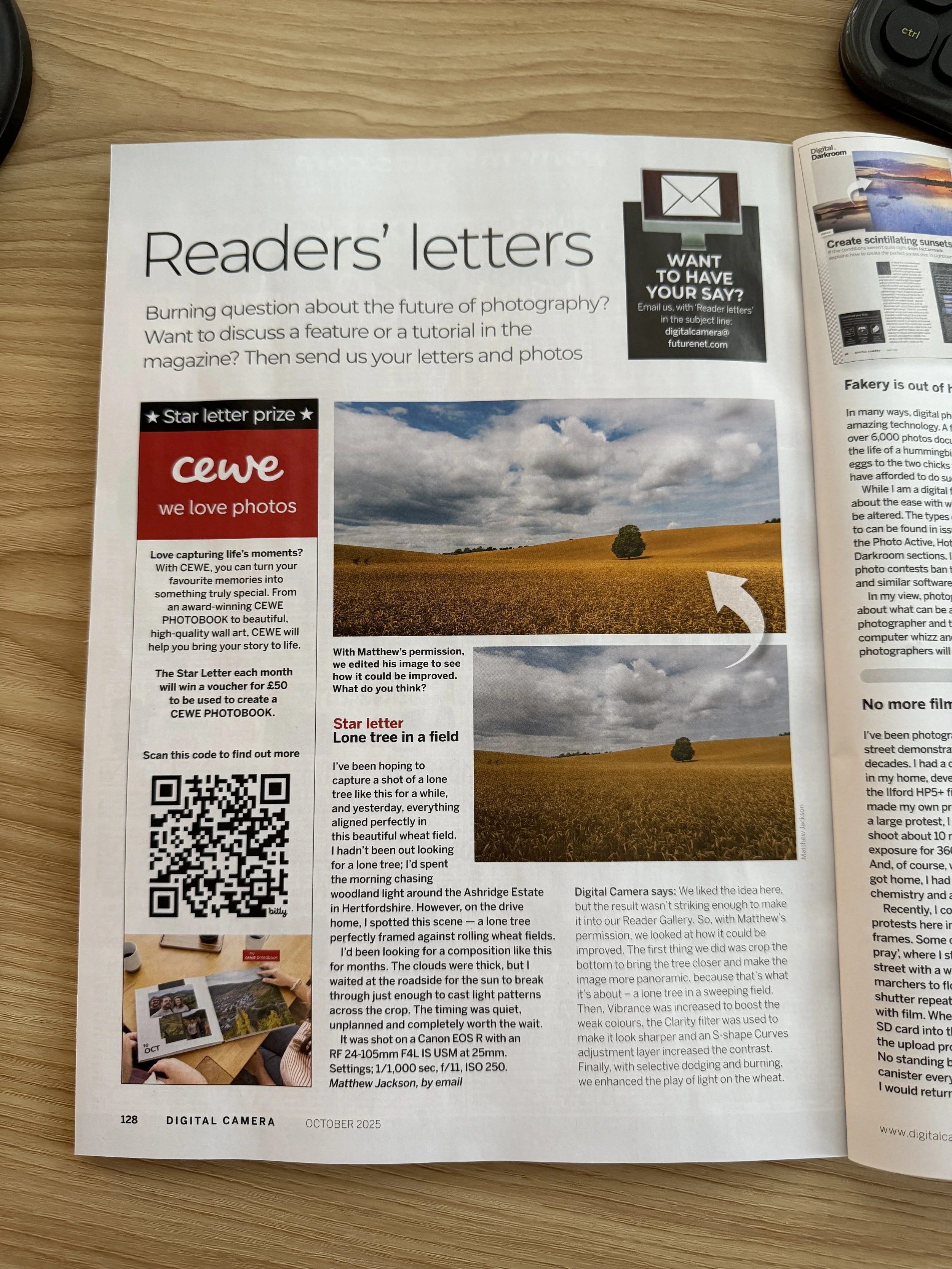The Tree, the Magazine, and the Edit That Followed
*As an Amazon Associate, I earn from qualifying purchasesWhy A Lone Tree 🌳
There has always been something about lone trees. They have this strange pull for photographers. Maybe it is the simplicity, one subject standing tall against the elements. Maybe it is the symbolism, strength, resilience, isolation. Whatever the reason, they have become almost a rite of passage.
Scroll through Instagram or flick through a landscape photography book and you will see them everywhere. Mist curling at the roots, storm clouds brewing behind, or fiery sunsets stretching across the branches. Every photographer seems to have their “lone tree” moment at some point.
I was not immune to it. Part of me wanted to prove that I could do it too. Not because I needed to copy anyone else, but because I wanted to see what would happen when I took on the challenge. A lone tree strips away distractions. There is no dramatic mountain range and no busy city lights. Just you, your camera, and a single subject that forces you to get the composition right.
It is deceptively simple. Which of course means it is not simple at all.
The Chase 🚶♂️
A few weeks before all of this, I had stumbled across a lone tree in a golden field at our local park. Sabrina and I had gone for an evening walk, stopping at the smoothie café on the way, and there it was. The kind of scene that makes you pause mid-sip and think, “Right, this could work.”
Sabrina carried on while I was left to it, fiddling with my CPL and switching over to the 100–400. Thankfully I had remembered to pack the tripod, because this was not going to be a handheld kind of experiment.
I wanted minimal. A bold, contrasty look where the tree stood proud against the field and the sky. That was the vision in my head.
The reality was a little different. The tree line behind the “lone” tree muddied things up. Instead of a clean silhouette, it felt like one tangled mess of branches all blending together. Still, I fired off a few frames.
Back home, I edited the results. And no surprise, I was not happy. The photo felt flat, and the sky was too plain. And I knew exactly why. It was everything I had just seen in the field: no clean separation, no clarity, nothing to make the subject stand out.
We went back the following evening, and the sky was definitely more dramatic. The problem was the same as before. No matter where I moved, the angle never quite worked. The tree line in the background stubbornly refused to give me that separation I was after.
So I dropped the spot into what I call the “it just doesn’t work for what I have in my head” bucket, and I waited. Sometimes you have to let go and hope another location will reveal itself when the time is right.
The Lens Test 🔍
The whole thing started with a completely different plan. We had headed out to Ashridge Estate for a lens test comparison, which I have written about in a previous blog. That was supposed to be the focus of the day.
But on the drive in, Sabrina spotted something in the distance and said, “That could be the tree you have been looking for.” She was right. From the road it looked like it had potential, a shape that stood proud, framed cleanly, and not swallowed up by other trees. I made a mental note, but we carried on with the lens test.
Impromptu Lunch & Journey Home 🥪☕
After the shoot we stopped at a local pub for lunch. While Sabrina tucked into her meal, I was doing what any normal person does when they are supposed to be relaxing. I was glued to aerial maps on my phone. I kept zooming in and out, trying to see what that tree looked like from above, checking if it really was standing in isolation or whether something would ruin it when I got closer.
The more I looked, the more convinced I became.
So we drove back the same way we had come, and there it was. The frame I had been searching for. A lone tree in full leaf, standing proud in the middle of a tall wheat field. The sky above was moody and textured, exactly the kind of interest I had wanted.
We pulled over. I grabbed my kit, set up at the side of the road, and lined up the shot. Excitement is not even the word. After weeks of frustration, this was the scene I had been waiting for.
The Shoot 📸
I set up across the road from the car, kit laid out and camera ready. At first I played around with a few compositions, moving slightly left and right, standing tall then crouching lower, until eventually I settled on one that felt right.
I still had the L lens attached, so I decided to give it one last go. What I didn’t know at the time was that this particular lens had an autofocus issue. Thankfully I switched over to manual focus and relied on focus peaking, watching that lovely red overlay sweep across the viewfinder until the whole scene looked tack sharp.
I checked my positioning several times, making sure the tree had its space and the frame felt balanced. Then it became a waiting game. The sky was shifting constantly, and I needed the light to break through just enough to add life to the scene.
Of course, all this meant kneeling in a patch of stinging nettles. Not my finest choice, but I powered through with the usual mix of optimism and slight regret.
When the light hit, I fired off several frames with the composition I had chosen. After a quick check on the back of the camera, I felt happy with what I saw. I packed up, walked back across the road to the car, and finally let myself relax.
I was content. I had the image I wanted. Or at least I hoped I did.
The Magazine Entry ✉️
After what felt like an eternity in Lightroom, I finally decided on my favourite frame. I edited it in my usual way, subtle and natural, nothing too heavy. I loved it. It felt clean, balanced, and true to the way I had seen it.
I was proud of that image, so I took a chance. I submitted it to the magazine with the hope of seeing it featured in the Readers’ Gallery. It was one of those moments where you hit “send” on the email, sit back, and immediately wonder if you should have tweaked something just a little more.
The reply came through the very next day. A mix of excitement and nerves hit me all at once as I opened it.
The photo had not made the Readers’ Gallery.
But then came the twist. Instead, it had been chosen as the Star Letter feature. The magazine wanted to publish it alongside a short piece about the story behind the shot. They also asked if it was alright to demonstrate how they would make editing enhancements to my image.
I paused. I had put so much into that edit. Subtle, natural, carefully considered. Did I really want someone else showing how they would “improve” it?
They sent me their version. Cropped into a panorama, edited much bolder, with a stronger punch than mine. It was more striking. More “wow” for the printed page.
And honestly, I could see why.
I didn’t need to think any longer. Of course I wanted them to publish it. Of course I wanted my work in print. Even if it wasn’t chosen for the gallery, it was still my photograph. They wouldn’t print an image that looked terrible. The edit simply hadn’t impressed them enough, and this was their way of showing how it could carry more impact.
And just like that, my lone tree was heading for the pages of a national magazine.
In Print 📰
Weeks passed. In fact, it was well over a month before I finally heard back from the magazine again. This time the news came with a bonus. Not only was my photo going to print, I had also won a prize for my work.
The issue was due out the very next day. Or so I thought. A dispatch delay meant I didn’t actually receive my subscriber copy until the day after. But of course I couldn’t wait. I went straight to the shops and bought one. Actually, I bought two. Which meant that once my subscriber copy turned up, I suddenly had three magazines. One for the binder. One to tuck away safely for years to come. And one to carry around and casually drop into conversations with anyone willing to listen. “Did I tell you I got my work published?”
I got back to the car and opened the magazine. There it was: my photo, my story, a full feature spread. At that point, I had no idea what they would write about the image itself. Alongside my story, they had added their own commentary.
Reading it was a strange mix of pride and deflation. Pride because I was in print. Deflation because the note reminded me that my photo hadn’t been “striking enough” for the Readers’ Gallery.
It took Sabrina, my biggest supporter, to bring me back to earth. She reminded me of what I already knew deep down. I was in print. A national magazine had published my image with a full Star Letter spread. That is no small thing. The edit may not have been their style, but the photo itself was strong enough to make the page.
And that mattered.
Re-Edit 🎨
While my first edit was not wrong, and I still stand by my subtle approach, seeing the image in print opened my eyes to something else. I could really see the benefit of adding a little more impact. This was not about abandoning my style, it was more about curiosity. What would happen if I pushed things just a touch further?
So I went back into Lightroom. I deepened the blues in the sky to give it more depth. Not overdone, just moody enough to carry the weight of the scene. I also played with the highlights in the wheat where the sun was catching, lifting the glow to add a touch of drama.
Composition-wise, I actually preferred the way I had framed it the first time. The magazine version had cropped tighter into a panoramic cut, but for me that stripped away too much. I did not want to lose the sense of space, so instead of cropping heavily, I just nudged the positioning to refine the balance.
The magazine also said they had increased clarity to sharpen the image. For me, the sharpness had been there all along. I had focused manually, relied on focus peaking, and the detail in the wheat was pin-sharp from front to back. I did not feel the need to crank the sliders.
What I reminded myself was that this re-edit was not about proving them wrong. It was about taking feedback and testing it against my own instincts. That is the value of critique. It does not have to dictate your work, but it can give you another angle, a fresh lens through which to look at your photo. Sometimes you stick with your original, sometimes you carry a lesson forward. Either way, you grow.
Lessons 🌱
This whole journey showed me that I am more of a rounded photographer than I realised. From scouting and researching locations to editing and post-production, I know what I am looking for. If I come away from a location without a keeper, that does not mean failure. It simply means the conditions or composition did not line up with what I had in my head.
It also confirmed something I have felt for a while. Critique is a way forward. Yes, it can sting when you first hear it, but once you accept it you realise it is a marker of growth. Every time I am open to feedback, I am reminded that I am still moving.
Re-editing this photo proved that growth does not require abandoning your style. My subtle edit was still valid, still mine. But the feedback pushed me to experiment with a little more impact. It showed me that I can expand my toolkit without losing my voice.
And finally, I saw just how different print is to screen. On a monitor, subtle tones can sing. On a printed page, they risk getting lost. Neither approach is wrong, but the medium matters.
For the Photographers 💡
If there is one thing I hope others take from this, it is that critique is not a verdict. It is a tool. Take what helps, leave what does not, and do not be afraid to test both approaches.
Try re-editing an image months later. Fresh eyes will often show you things you missed before. You might confirm your original instinct, or you might find a stronger version hiding in plain sight.
If you ever plan to print your work or submit it to a magazine, remember that screens and paper behave differently. A subtle edit might glow on your monitor, but prints often need more contrast and punch to stand out.
Be patient with yourself. Sometimes it takes weeks of chasing, kneeling in nettles, and trying every angle before a scene finally comes together. That is not wasted time. It is part of the craft.
And most importantly, remember this. The very act of putting your work out there means you are growing. Critique is not proof that you are falling short. It is proof that you are moving forward.
Final Thought ✨
That lone tree gave me more than a photo. It gave me patience, persistence, and the reminder that critique is part of the creative process.
At first the words “not striking enough” knocked the wind out of me. But once the dust settled, I saw them for what they were. Not a verdict. An invitation. An invitation to look again, to push myself, and to grow.
We all want our work to be celebrated. We all want that sense of validation. But the truth is, growth often lives in the middle ground between pride and discomfort.
So if someone tells you your photo is “not enough,” do not let it stop you. Let it challenge you. Let it sharpen your eye. And above all, let it remind you that putting yourself out there is the real win.
Because in the end, the tree stood tall, the image made it to print, and I came away stronger for it. That, to me, is a story worth sharing.


